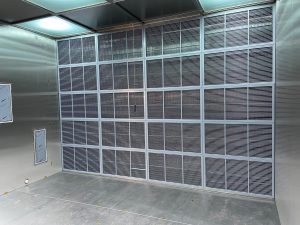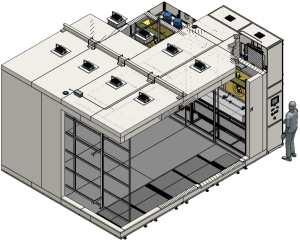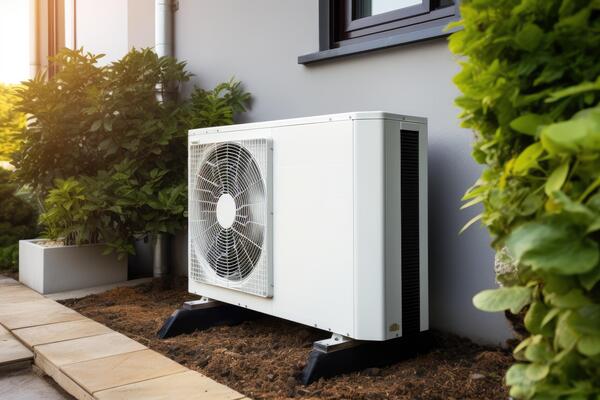Air-source heat pumps are emerging as a key solution for moving our energy systems away from their current dependency on fossil fuels. Nevertheless, a big question when considering whether or not to install heat pumps is: how effective and efficient are they at extracting thermal energy from the air?
It’s not a straightforward question to answer. In order to evaluate heat pump capabilities and compare products from different manufacturers, a number of standards have been developed which describe the rigorous requirements for testing these devices, including EN 14511 and EN 16147.
In the early days, these tests were performed in rooms equipped with conventional HVAC systems, but these are not generally designed to maintain conditions to the required precision. Sharetree saw an opportunity to improve the testing of heat pumps by developing an innovative walk-in environmental chamber specifically for this purpose, which they hope will increase confidence in the test results and encourage more heat pumps to be installed.
This objective posed a considerable engineering challenge. The tests required that the environment inside the chamber simulated the outdoor space in which most heat pumps operate, behaving like an infinite volume of air yet with consistent and controllable thermal and flow properties. These conditions also had to be maintained in spite of the cooling and heating cycles that regularly occur during heat pump operation, which would normally alter the baseline conditions within a confined space.
Meeting the flow and humidity requirements
When testing a heat pump, it is critical that the air supplied is of a steady and controllable temperature and humidity. This air must also be fed to only one side of the heat pump, as mixing of the input and output air streams can ruin the efficiency of the device – in other words, the pump must sit in a slow, laminar air flow. To create this, Sharetree applied the same principle used successfully in their existing range of walk-in rooms, in which air is pulled through louvres and across the chamber by fans, rather than being pushed.

The second challenge was achieving the unprecedented level of accuracy and precision in the humidity control that the test standards demanded. In particular, the test conditions must be able to withstand the perturbation caused by the defrost cycles that are a part of the heat pump’s operation. These involve the regular release of large volumes of warm air for about 10 minutes at a time, to melt any frost forming around the inlet of the heat pump, which can reduce its efficiency. Sharetree developed an innovative four-stage system to cope with this, comprising mechanisms to both add and remove moisture from the air: a water spray or a controlled intake of ambient air from outside the chamber increases the humidity, while a feed of dry air and a dehumidifying coil reduces it.
The combination of these engineering controls gave a result that exceeded both expectations and the project’s specifications when a 10 kW heat pump was tested in the chamber. Conditions at -7°C and 69% relative humidity were maintained within the required tolerances during normal operation of the heat pump, and re-established within 10 minutes of a defrost cycle occurring. The required services were connected to the heat pump using the configurable feedthrough panels in the chamber wall, and the chamber itself was integrated with the test facility’s data acquisition system using the communication inputs and outputs available.

Sharetree is now actively exploring opportunities with companies looking to set up state-of-the-art facilities for testing and evaluating air source heat pumps under the rock-solid baseline conditions that these chambers can deliver. They have also developed solutions for testing monobloc and split heat pumps, and even air-to-air systems using conjoined chambers with an internal wall.
